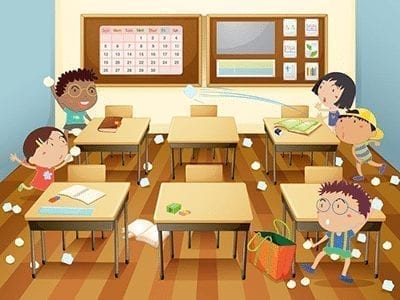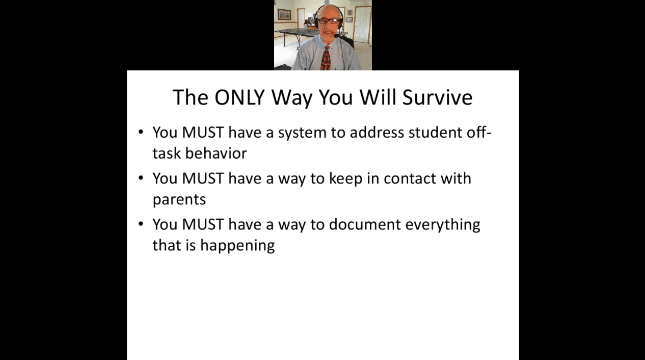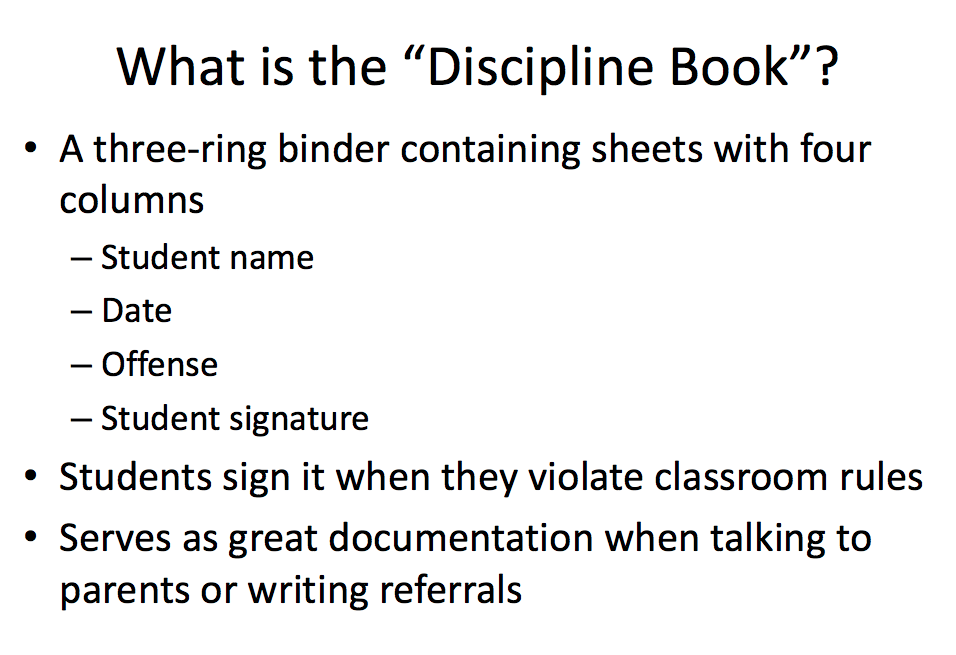Stopping Out-of-Control Classroom Behavior From the Start
Bad behavior is a snowball effect—it grows and grows until it can’t be stopped. If teachers don’t have a system in place for addressing that behavior from the beginning of the year, they will appear to have a lack of credibility and authority. In his recent edWebinar, Shannon Holden, Assistant Principal of Republic Middle School in Missouri, went over essentials for setting the school year up for success by starting out on the right foot.
Out-of-control behavior ultimately begins when teachers are afraid to rock the boat. They must be confident about following through with consequences in class and speaking to parents about a student’s misbehavior. Otherwise, students may start to take advantage of the lack of consequences. In order to maintain good behavior in the classroom, a standard must be set at the beginning of the year, and that action plan should include a system for addressing off-task behavior, contacting parents, and a way to document what is happening.
Ideally, this plan begins on the first day of school and includes having a seating chart, a KWL chart (know, what to know, learn), a discipline plan, and student information sheets. While having a seating chart may not seem like a big deal, it is crucial for maintaining a position of authority. Taking attendance from a list every day runs the risk of looking unorganized. A seating chart, on the other hand, is an easy way to maintain order and keep track of everyone.
Next, a KWL chart will help provide an understanding of how students will interact in class. For example, if a student answers that they know nothing and want to know nothing, that could indicate which students may need more attention behavior-wise later on.
A discipline plan that includes rules, procedures, consequences, rewards, and severe clauses is a must for maintaining appropriate behavior from the start of the year. Shannon recommends having just a few core rules or they may be hard to keep track of. That also adds more accountability for students to follow the rules since, there are not too many.
A discipline plan should also include consequences that equal the misbehavior. Shannon correlates consequences and misbehavior with how often a student has to sign a discipline book. Each misbehavior equals a signing of the discipline book. One signature means a teacher/student conference, two signatures mean a call home, and so on. He added that teachers should try to handle the misbehavior several times on their own before sending students to an administrator as a consequence. On the other hand, rewards for good behavior are important too. These can include a positive call home, dance tickets, or a sit-where-you-want day.
Student information sheets contain important information for tracking calls to home. They should contain the parent contacts, reasons for and date of contact, and any comments. It is helpful, if the misbehavior continues, to track the amount of calls home and to whom they were made. Teachers must simply tell parents that they’re calling to let them know that their child had to sign the discipline book (or whatever the discipline plan includes), and leave any emotions out of the conversation.
If these steps seem like a lot to handle on top of everything else at the beginning of the year, Shannon says: do it anyway. “Some teachers will say, ‘I don’t have time to do all of this!’ You don’t have time to NOT do this,” he said. Taking the time to start off strong at the beginning of the year means teachers will be viewed as accountable and firm but fair—and will therefore maintain positive relationships with students, parents, and administrators throughout the year.
This broadcast was hosted by edWeb.net.
This article was modified and published by eSchool News.
About the Presenter
Assistant Principal at Republic Middle School in Missouri, Shannon Holden has been a high school and middle school administrator and teacher in Texas and Missouri for 20 years. Shannon presents frequently to teachers and administrators about classroom management, maintaining positive relationships with parents, instructional strategies that engage students, and implementing technology in the classroom. He is the host of the Teacher HELP! and TechTools for the Classroom communities on edWeb.net. Follow him on Twitter @newteacherhelp.
Join the Community
Teacher HELP! is a free professional learning community that helps teachers get advice, support, and share experiences about teaching.





Comments are closed.